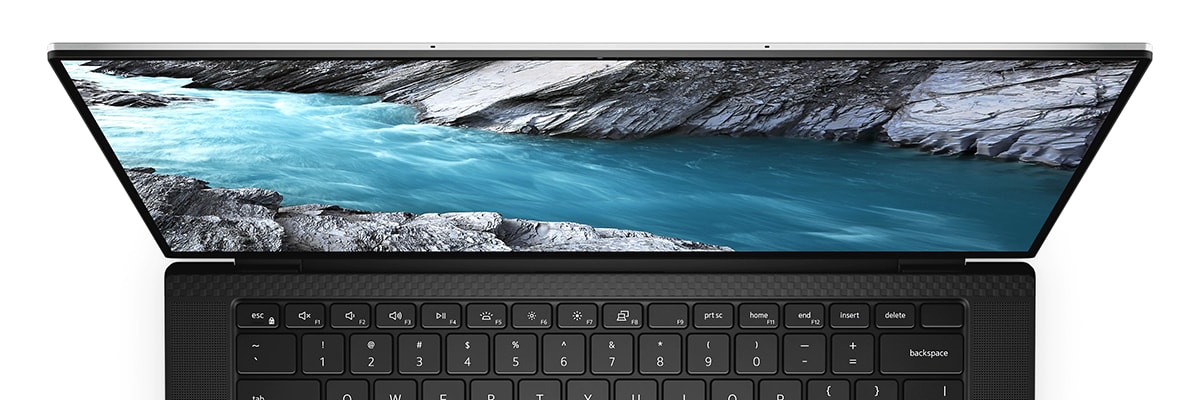
Return navigate_next
Premium Laptop Showdown: Dell XPS 15 vs. MacBook Pro
April 28, 2021 *
If you’re in the market for a new premium laptop, you’ve got some rewarding choices before you. There are some truly beautiful machines available in 2021 in the premium laptop space, so it’s a good time to be looking.
The sheer number of laptop options can sometimes make it difficult to know where to start. And even once you settle on a model, there are many configuration options.
While it’s difficult to narrow down the field, some premium laptops do stand out from the crowd. Among these are the Dell XPS 15 and the MacBook Pro. Keep reading to learn what sets these machines apart— plus which one makes the most sense for you.
Whichever model you choose, premium purchases demand quality protection. Check out Upsie’s selection of extended laptop warranties to find a plan that meets your needs and budget.

Operating System
While this aspect may be obvious to most readers, it’s included first here because of how crucial a difference it is. The Dell XPS 15 is a PC that runs Windows 10 out of the box. If you’re technologically minded, you could get something like Linux running on it. But it’s made to be a Windows machine.
The MacBook Pro, on the other hand, runs MacOS. (Yes, with the right knowhow, you can run Windows on a Mac — but most everyday users aren’t going to do this.)
The two OSs do many of the same things, but they are quite different. Windows has the start menu; Mac has the Dock. There are big differences in which apps will work, though most of the biggest ones have versions for both OSs.
If you’ve used both MacOS and Windows 10 recently, chances are you already know which one you want. If you’ve only ever used one, find a way to try out the other before you drop over $1000 on a laptop that uses it. You might find that you love the change, but you could hate it, too.
Dimensions and Weight
Both machines are well built, but there are some differences to note in terms of dimensions and weight.
The XPS 15 weighs in at around 4.5 pounds and features a 15-inch screen. The laptop is 0.71 inches thick and measures around 13.5 by 9 inches.
The MacBook Pro comes in two sizes currently. The smaller 13-inch MacBook Pro is just 0.61 inches thick and weighs just three pounds. It’s almost 12 inches across and 8.36 inches deep, as well.
There’s a larger 16-inch MacBook pro, but it hasn’t been updated in a while and isn’t included in this comparison.

Features, Specifications, Price
XPS 15
The XPS 15 is a beautiful machine, featuring one of the brightest and sharpest screens in its class. The display is immersive, too, with just the slightest bezel on each side. On screen quality, the XPS 15 wins by a long shot.
One relatively weak point is the processor: the only choices are Intel’s 10th-generation i5, i7 and i9 chips. These chips are fast but a little bit dated.
The entry-level XPS 15 starts at $1,099.99.
MacBook Pro
The new M1 processor in the Apple model is just about the most powerful chip in a consumer laptop. Simply put, it’s a thing of beauty. However, it’s brand-new tech, and there are some compatibility issues and limitations.
On the Intel models, the MacBook Pro is also stuck with 10th-gen Intel chips. The Touch Bar and Touch ID here are excellent, as is graphics performance.
Starting price on the M1 MBP is $1299.

Dell XPS 15 or MacBook Pro: Which One Should You Buy?
For many, the operating system alone makes this decision easy. If you want or need Windows, choose the Dell XPS 15. If you want or need MacOS, then the MacBook Pro is a no-brainer.
Beyond that, there are some questions to ask. What do you want to use your computer for most of all? For the most raw processing power (but at the sacrifice of some compatibility), the M1 MacBook Air wins out. If you want the creative edge of a MacBook but need to stick with an Intel processor, the variant 13-inch MBP or the much beefier 16-inch might be the right choice.
If you want to do more PC gaming, though, or are worried about the software limitations that come with choosing Mac, the XPS 15 is a truly impressive choice as well.
Protect Either Laptop with an Upsie Extended Warranty
The choice of premium laptop is up to you. But what happens to it after you bring it home may not be. Accidents happen all the time: roommates, kids and even pets can turn your $1200+ laptop into an expensive doorstop in the blink of an eye.
That’s why it makes sense to have an extended warranty for your premium laptop. Upsie’s extended warranties are a breeze to use, and they won’t break the bank in the process. For a low upfront cost, you can get two or even three years of extended warranty coverage, including accidental damage. If you need to make a claim, you simply pay a small $25 deductible — far less than you’d pay with AppleCare+.
Don’t leave that new machine’s fate up to chance. Get protected with Upsie today.
Learn More About Laptop Protection:
* This article is over 6 months old and may or may not be updated.
